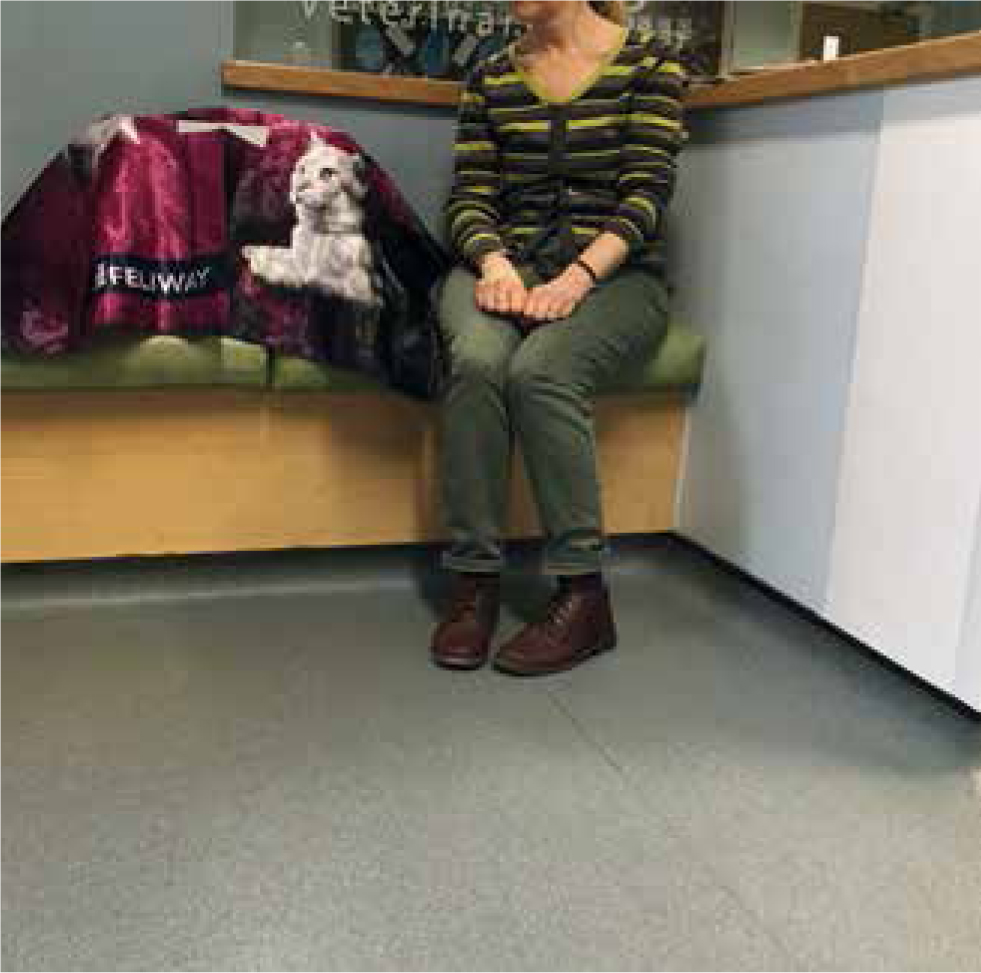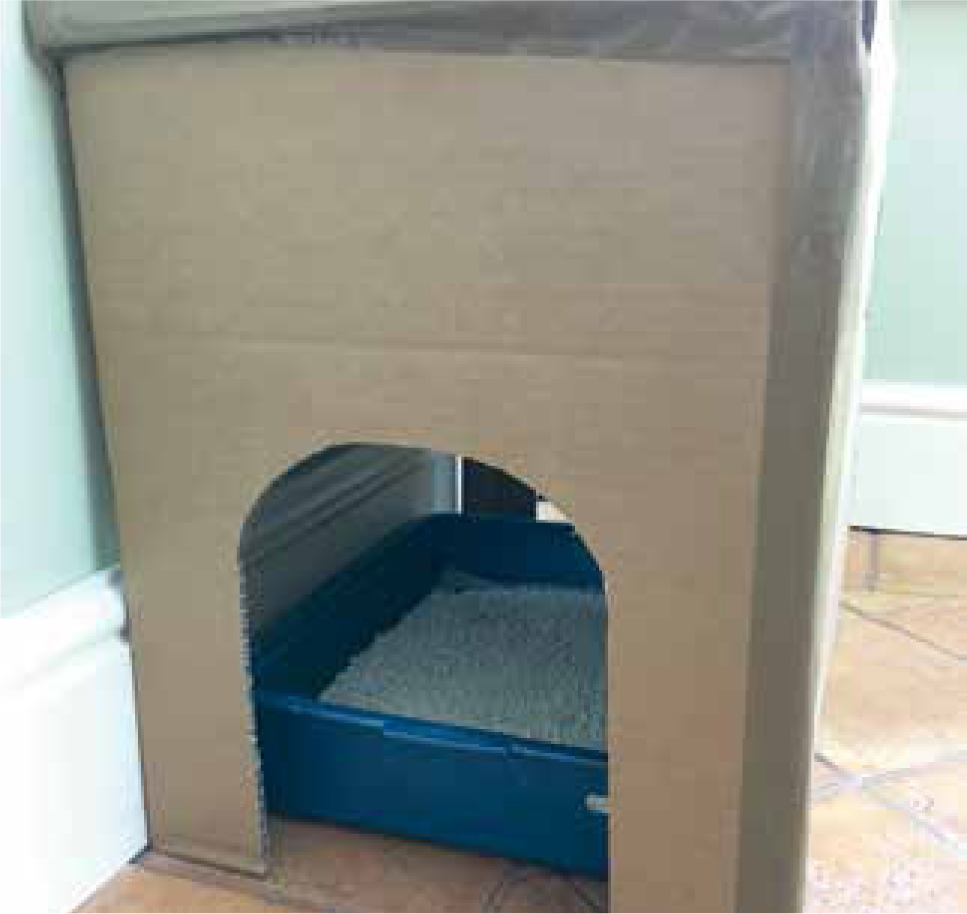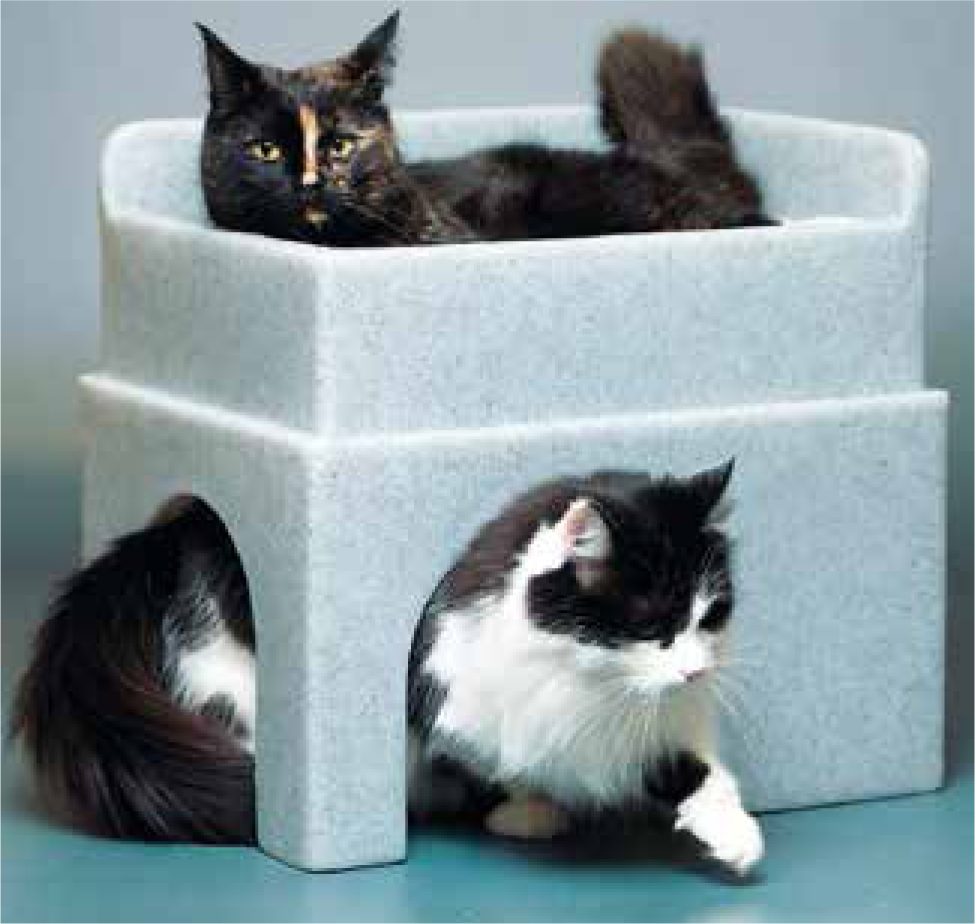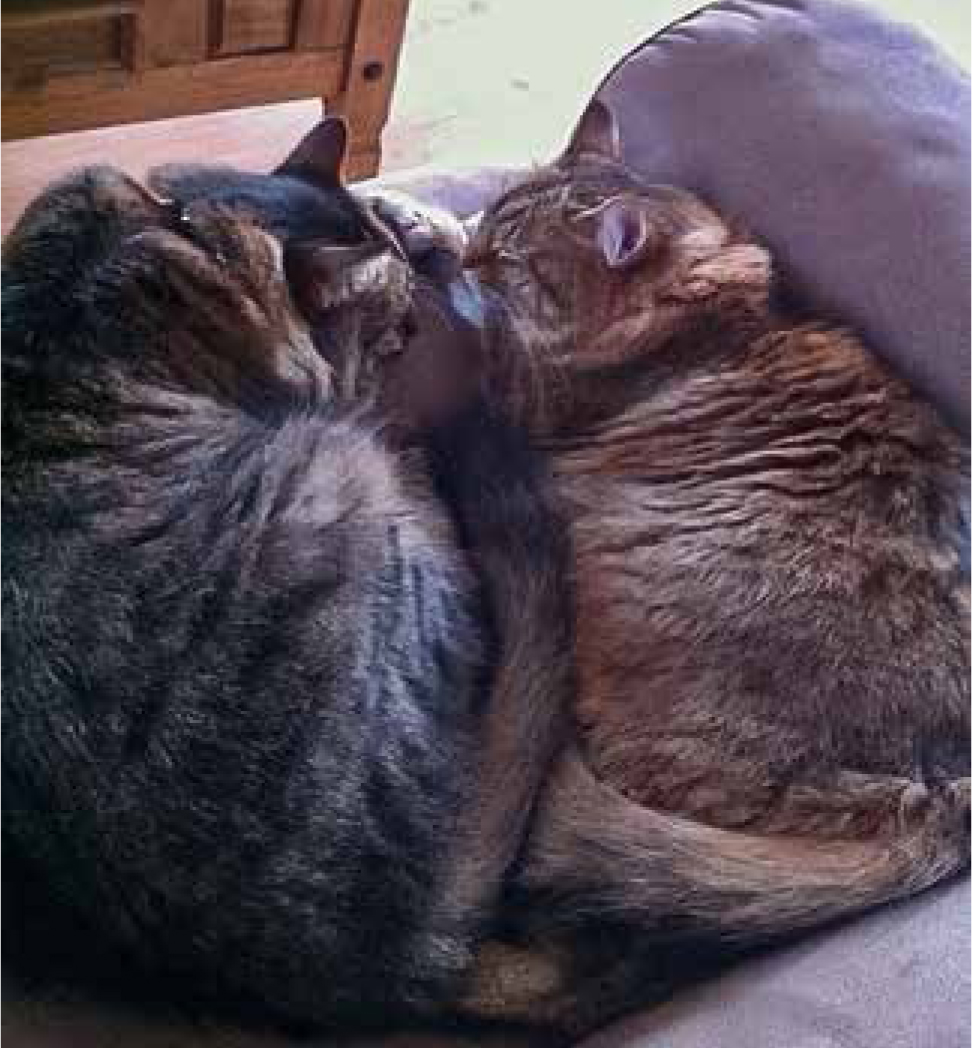Visits to the veterinary practice can be extremely stressful for feline patients (Horwitz and Little, 2015; Lloyd, 2017) and this is evident in many cats as soon as they enter the hospital. Stress affects emotional wellbeing and, in the long-term, can impact on health (Mills, 2015). Some of the challenges that the feline patient has to endure in the practice include lack of control through forced restraint and handling, changes in routine, strange noises and scents, unfamiliar people and animals. Being proactive in creating a positive patient experience should therefore be a priority for every member of the veterinary team and this should extend to every department of the hospital.
The primary goal of feline-friendly veterinary care is to make the cat feel safe and secure throughout its medical experience and every member of staff has a crucial role to play in this endeavour. Initiatives such as the Cat Friendly Clinic programme promoted by the International Society of Feline Medicine (ISFM) provide practical recommendations, helping practices become more proficient at meeting the cat's unique needs (Endersby, 2018).
Cats are particularly sensitive to their surroundings and visits to the veterinary practice present them with many challenges. As a species that is selectively social, they avoid confrontation with other unfamiliar cats through avoidance or hiding. Without access to these coping mechanisms they may use defensive aggression (Rodan et al, 2011). Simple measures such as allowing a cat to feel hidden by using towels and covers may enhance a cat's sense of security and facilitate safer handling.
Therefore, if all staff members can appreciate the cat's unique needs and make appropriate adjustments to the environment and working practices, optimal healthcare can be delivered without compromising feline welfare. This article provides an overview of the key considerations through some dos and don'ts for reducing feline stress throughout the veterinary environment. It is presented in a series of tables and may be useful as a quick reference. As such, it is not intended as a full review article.
Understanding the cat's needs
In the reception and waiting area
The reception and waiting area can present a range of stressors including: unfamiliar noises and scents, people, animals and being confined to a carrier. Making small changes and modifying the waiting room environment can help reduce a cat's stress levels (Table 1). In turn, this helps make subsequent examinations and procedures less challenging.
Table 1. Dos and don'ts in the reception/waiting room
| Do | Don't | How | Why |
|---|---|---|---|
| Provide the cat with a sense of security and safety | Allow cats to feel vulnerable |
|
|
| Provide clean covers/towels to drape over cat carrier | Allow cats to be looked at through crates and baskets |
|
|
| Ensure covers used for carriers are free from the scent of others | Allow a cat to be in close proximity to another cat's scent |
|
|
| Encourage owners to place the cat carrier in a raised location (Figure 1) | Place carriers at floor level |
|
|
| Manage the area around the reception desk to prevent a gridlock of people and animals | Allow a build-up of people at the reception desk |
|
|
| Ventilate the waiting area to avoid a build-up of stress pheromones | Ignore the negative effect that stress pheromones can have on some animals |
|
|
| Consider using pheromone therapy in the waiting room environment | Forget to follow the manufacturer's instructions to ensure maximum efficiency |
|
|

In the consulting/examination room
The examination experience can be difficult for many cats. An invasion of their personal space and forced restraint can contribute to their anxiety and mood state. Addressing some of the cat's environmental needs and applying principles that take their social preferences into account should help reduce their anxiety, promote feline welfare and prevent staff injuries (Table 2).
Table 2. Dos and don'ts in the consulting/examination room
| Do | Don't | How | Why |
|---|---|---|---|
| Give the cat time to process its surroundings before attempting any handling | Try and physically remove the cat from their carrier |
|
|
| Avoid signals that can be perceived as a threat | Make direct eye contact or loom over the cat |
|
|
| Provide an option for hiding during the examination | Forget to provide cats with the opportunity to take cover if necessary |
|
|
| Allow the cat to retain a sense of control and handle with due care | Scruff or pin |
|
|
| Respect the cat's sense of smell and scent profile | Remove or mask the cat's familiar scent |
|
|
| Use appropriate chemical restraint if there is no other option but to proceed with handling | Persist in trying to handle and restrain a cat that is very stressed |
|
|
In the ward (for day cases)
Cats will inevitably feel uncomfortable within the veterinary environment. The problem will be exacerbated the longer the period of confinement. Although trying to meet the cat's environmental needs within the ward is always going to be a challenge, there are a number of approaches that can be adopted in order to minimise stress (Table 3).
Table 3. Dos and don'ts in the day ward
| Do | Don't | How | Why |
|---|---|---|---|
| Separate cats from other species | Allow cats to share a ward with other species (where possible) |
|
|
| Avoid cats being able to see one another | Permit visual contact with others |
|
|
| Place litter trays in a private location (and away from food or water stations) | Forget the cat's sense of privacy |
|
|
| Provide somewhere suitable for the cat to hide and sleep | Allow the cat to feel insecure |
|
|
| Keep noise to a minimum and prevent bright glare from lights | Forget that cats prefer a quiet, calm and relaxing environment |
|
|
| Use pheromone therapy in the ward | Forget to follow the manufacturer's instructions for optimum effect |
|
|
| Be aware of the cat's scent profile when cleaning their accommodation | Remove the cat's scent profile when cleaning |
|
|
| Ensure the compatibility of cats from the same household before putting them together in the same pen | Assume that cats that live together are well-bonded |
|
|
| Ensure that cats are kept separately when recovering from a general anaesthetic | Place cats together when coming round from a general anaesthetic |
|
|
| Advise owners with multi-cat households to keep the hospitalised cat in a separate room until fully recovered and all cats are calm | Introduce a cat that has been hospitalised to the others in the household until it has fully recovered from the effects of general anaesthesia |
|
|



Longer periods of hospitalisation require a more thorough and detailed plan of action to prevent chronic stress. This includes the layout and furnishing in the pen, and taking a full history from owners to enable the veterinary team to understand the cat's likes and dislikes. Providing feeding enrichment, opportunities to play and ensuring that behavioural observations and patient assessments are continually made and recorded are important (Carney et al, 2012).
In the preparation room
The same principles used in the examination room can be adhered to in the preparation area. However, additional things to consider include purchasing cat-friendly equipment. This may include small fur clippers that tend to be quieter and are less likely to induce a startle response. Handling should always be sympathetic to the cat's needs. Adopting the mantra used by Cats Protection: ‘Less is more, four on the floor’ is a good rule.
Scruffing a cat is not a positive experience and being pinned down can be interpreted as a threatening gesture (Rodan et al, 2011). The area around the neck is often targeted in a cat fight and so handling a cat there is likely to cause fear. As such, scruffing should be avoided.
Conclusions
This article has demonstrated a number of practical strategies that can be easily adopted and implemented within the veterinary environment. By making small changes and anticipating the cat's environmental needs, the veterinary team can significantly improve feline welfare, leading to less challenging and stressful examinations for themselves and their feline patients.
KEY POINTS
- Cats are selectively social.
- To cope with stress, cats often chose to hide in private, secluded, raised locations.
- Aggression is a consequence of being unable to access coping mechanisms.
- Meeting the cat's environmental and social needs improves cat welfare and optimises veterinary health care delivery.
Useful resources for the veterinary team
https://catvets.com/public/PDFs/ClientBrochures/Cat-to-Vet-HandoutPrint.pdf
https://www.cats.org.uk/media/1725/cp_behaviour_guide-web.pdf
https://www.partnersforhealthypets.org/practice_feline.aspx
https://www.catsprotectionshop.co.uk/acatalog/Hide—Sleep-81399.html


